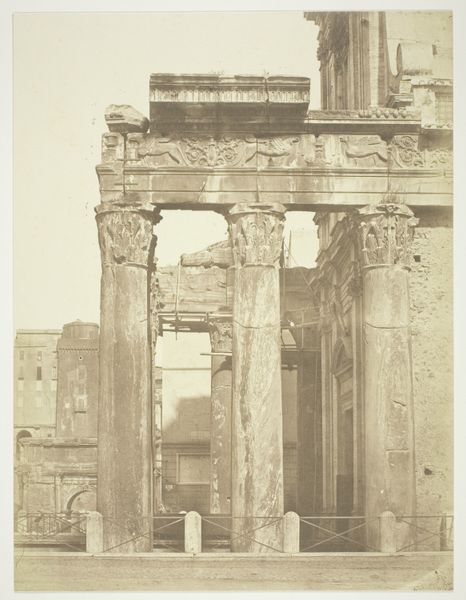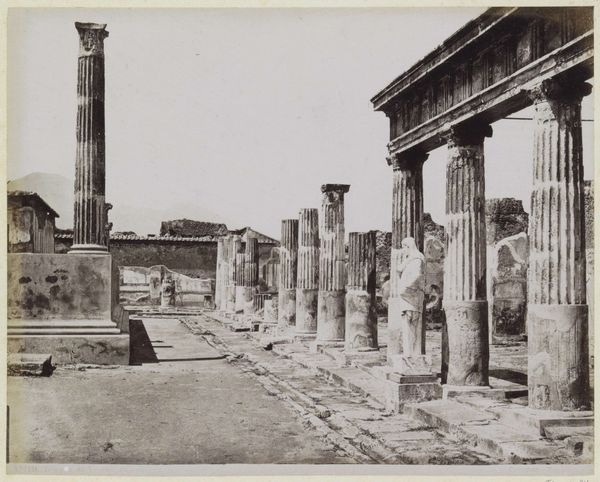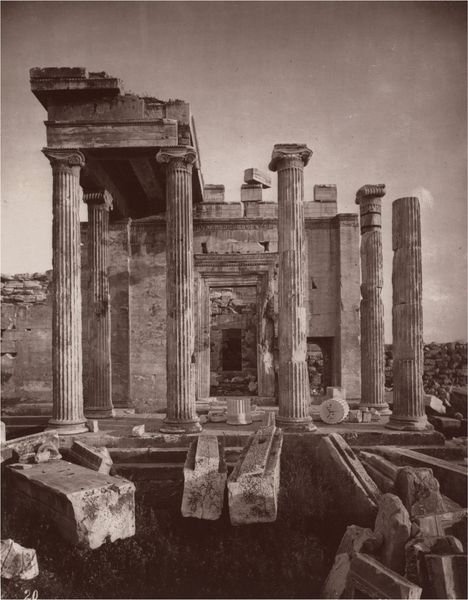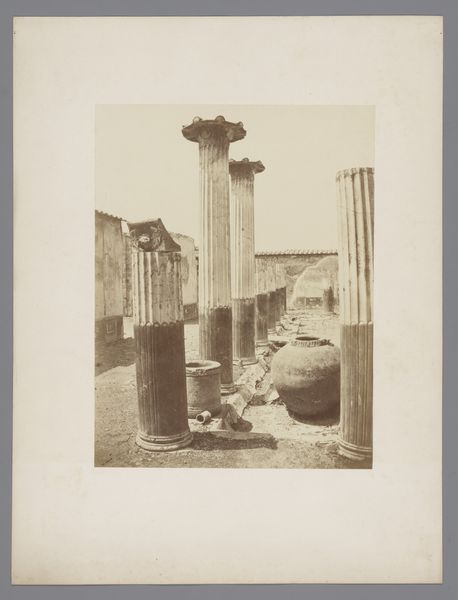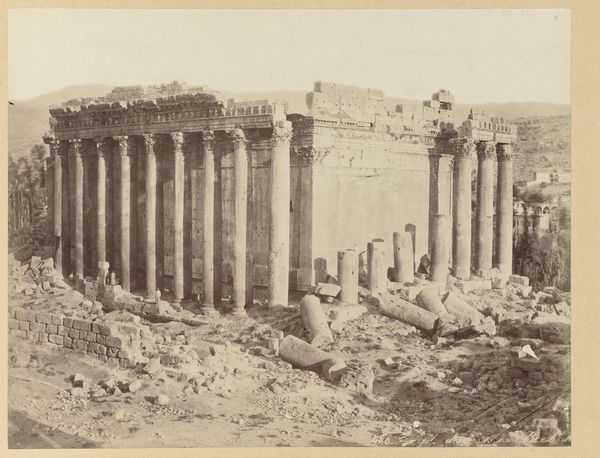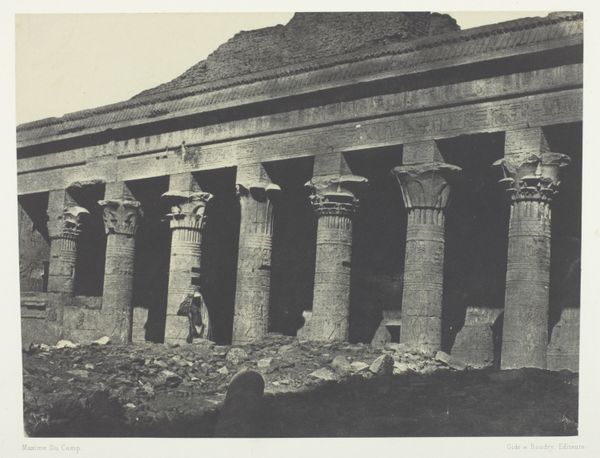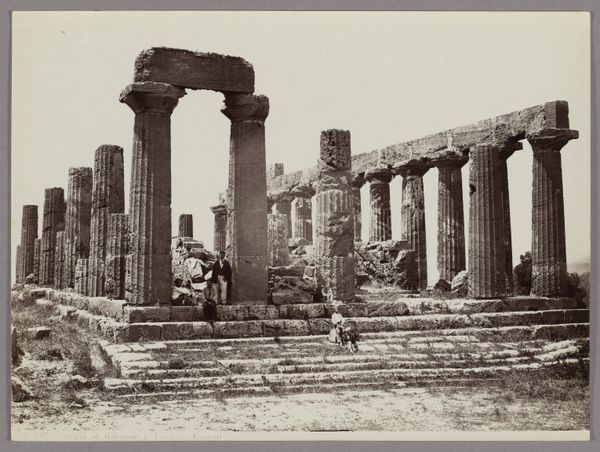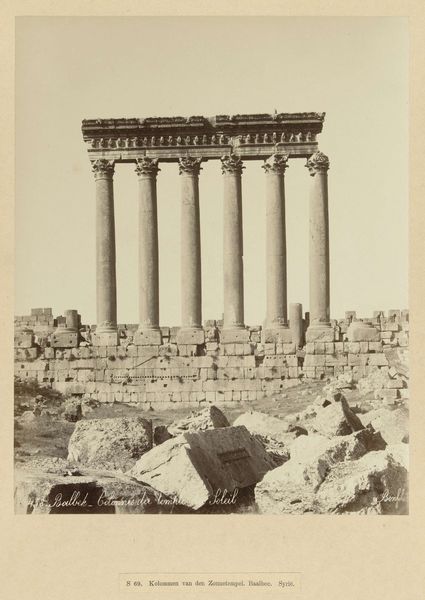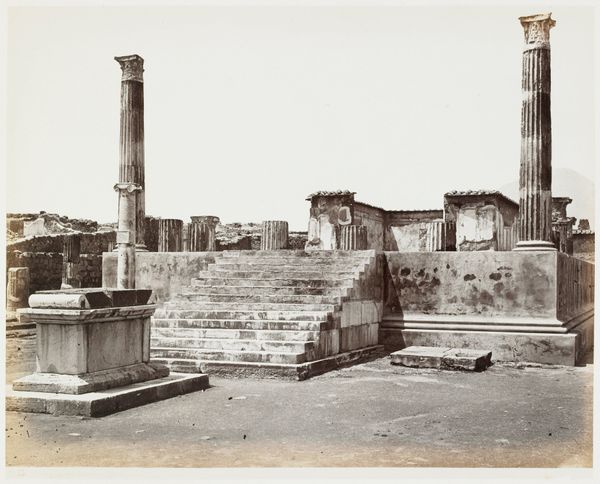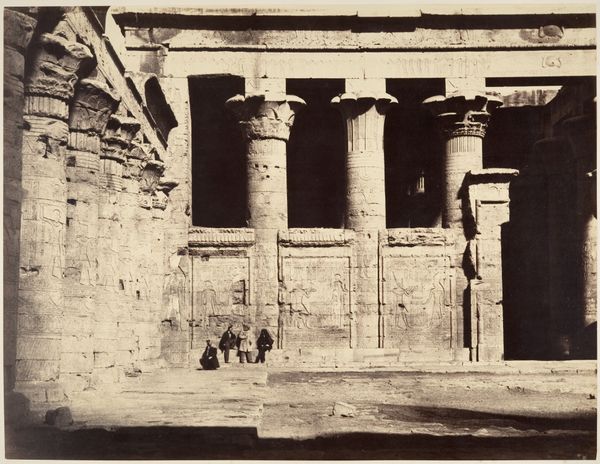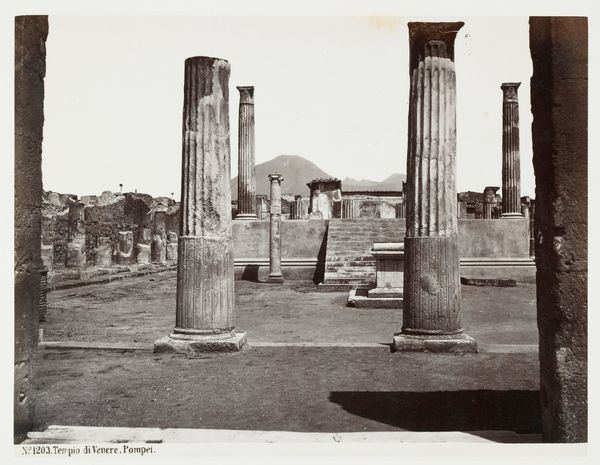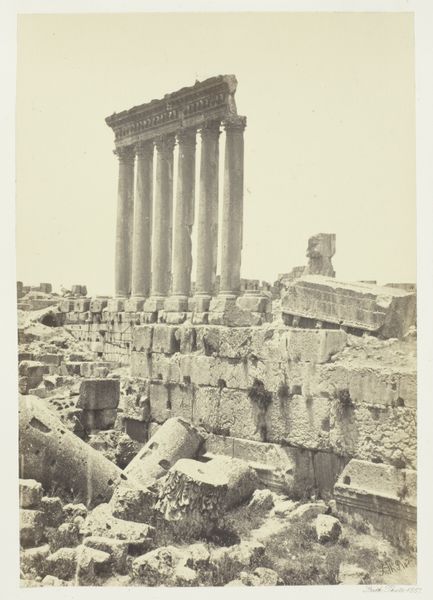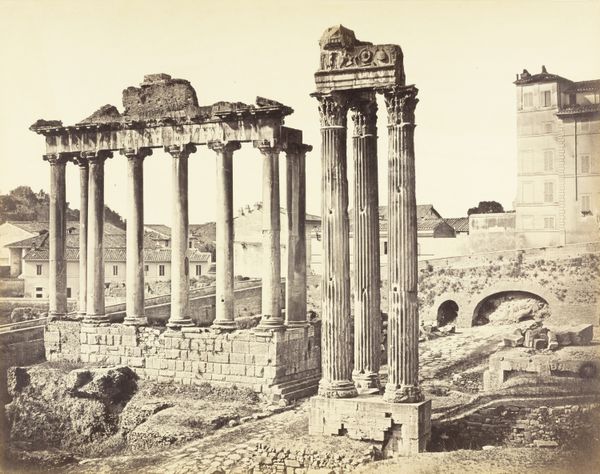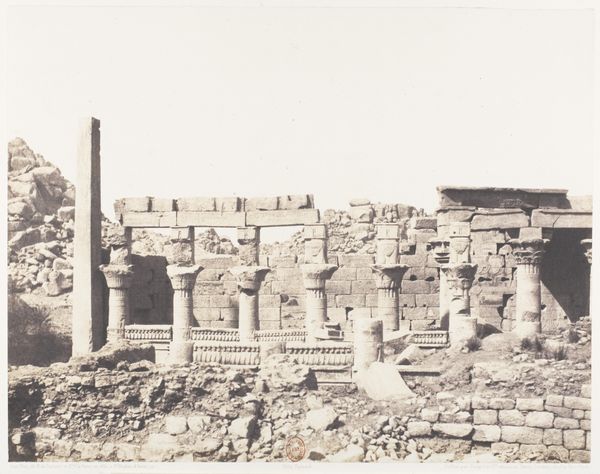
silver, print, photography
#
16_19th-century
#
silver
#
photo restoration
#
natural tone
# print
#
organic shape
#
war
#
natural composition
#
nature
#
photography
#
egypt
#
england
#
nature friendly
#
naturalistic tone
#
nature heavy
#
nature environment
#
men
#
agriculture
Dimensions: 23 × 15.2 cm (image/paper); 42.6 × 29.6 cm (album page)
Copyright: Public Domain
Editor: Francis Frith's 1857 silver print, "The Great Pillars and Smaller Temple, Baalbec," presents this imposing architectural ruin. The scene evokes a sense of melancholy grandeur and speaks to the transience of human achievements. What underlying meanings or symbolic weight do you see here? Curator: The image immediately speaks to me of cultural memory. Look at the way the light catches the broken capitals. Frith, likely intentionally, captures the temple not just as a physical structure, but as a symbol of civilizations risen and fallen. These pillars, remnants of Roman grandeur in what is now Lebanon, represent a layered past. Note how even in ruin, the remaining structure impresses through its size. The careful positioning of figures near the base makes a direct connection to scale and serves as a poignant reminder of our fleeting existence against the backdrop of enduring history. The columns almost seem to be witnesses. Do you perceive a continuity in how such ruins are depicted across different cultures and eras? Editor: That's an interesting idea. There is definitely something about ruins that captivates different generations. It feels as though the artist tried to capture the scale and timelessness, embedding subtle markers within it. It certainly makes one question our contemporary structures and our impact on history! Curator: Exactly. And in doing so, Frith isn't simply documenting a ruin. He's creating a powerful emblem of time, legacy, and the cyclical nature of power. It is about cultural continuity, trauma, adaptation, and reconstruction. What do you take away now? Editor: I see the way the photograph becomes more than a depiction of ruins; it's an exploration of how we relate to history through these silent, colossal symbols. Curator: Indeed, a potent dialogue between the present and a deeply resonant past.
Comments
No comments
Be the first to comment and join the conversation on the ultimate creative platform.
